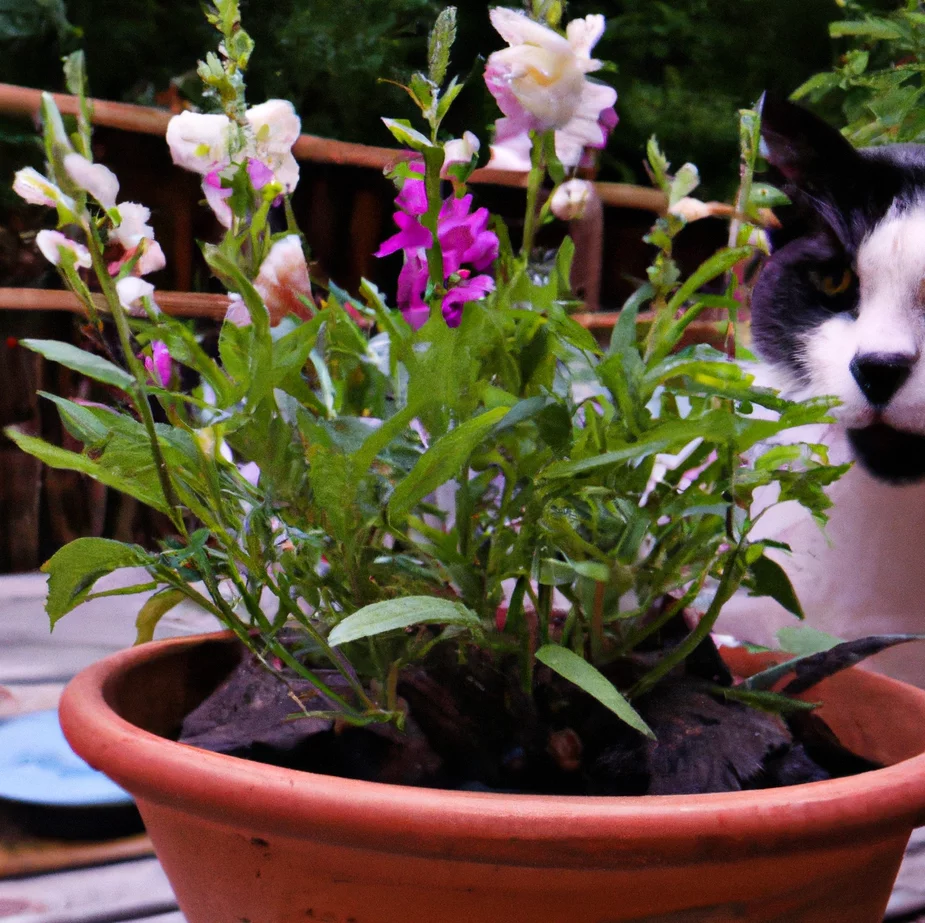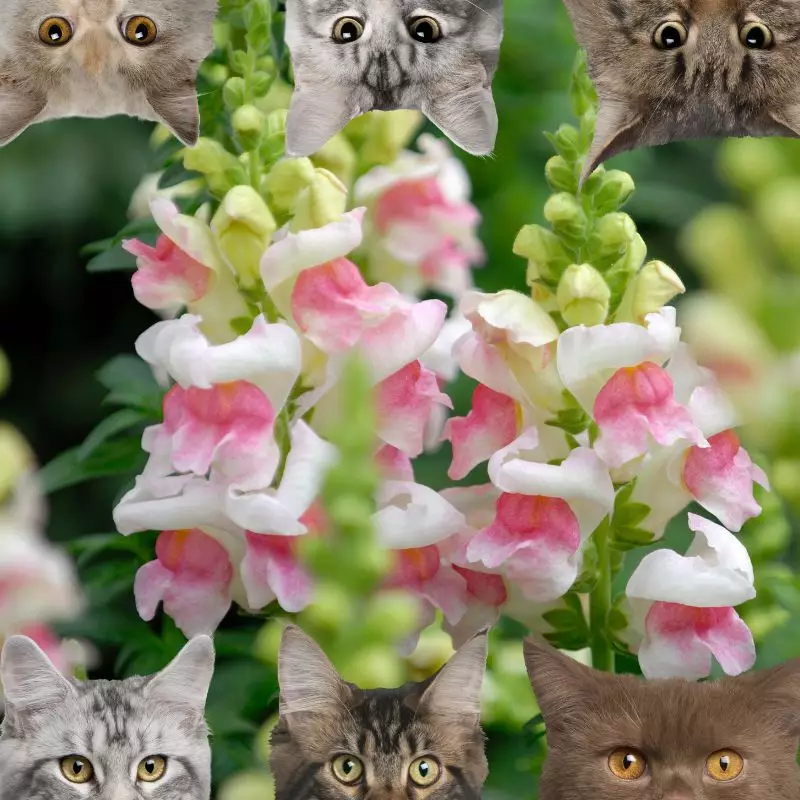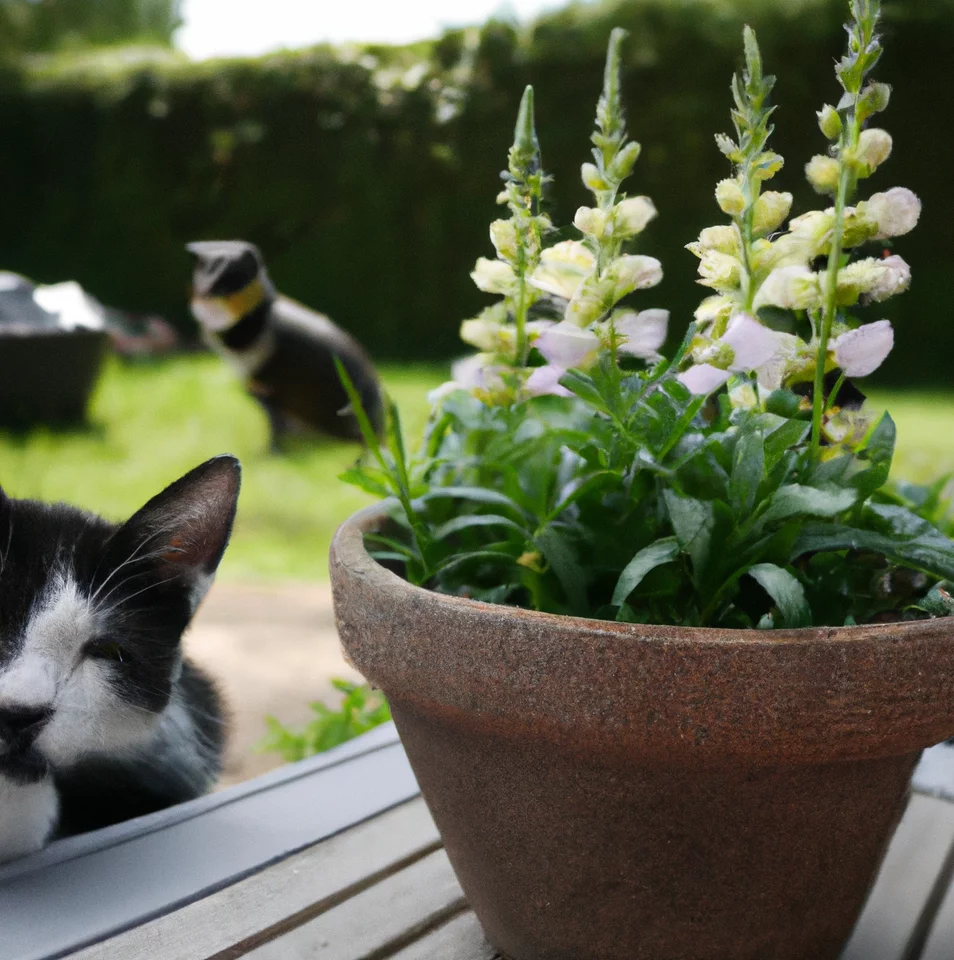No, the lesser snapdragon or weasel’s snout is not poisonous to cats.
This article has been meticulously crafted in collaboration with a team of experienced DVMs (doctors of veterinary medicine). Through their expert contributions and our dedicated research into high-authority websites such as the ASPCA and PetMD, we can confidently affirm that the lesser snapdragon is deemed non-toxic for cats.
It is listed on the American Society for the Prevention of Cruelty to Animals’ (ASPCA) list of non-toxic plants and is also considered safe for dogs and horses. Nonetheless, while cats may not be harmed by the plant, cat owners are always advised to exercise caution when their feline companions show interest in consuming any plant.
Can Cats Eat Lesser Snapdragon or Weasel’s Snout?

In case your cat has bitten a small piece of a lesser snapdragon, he or she should be fine. You should not worry since lesser snapdragon does not contain toxic properties that can endanger your feline companions.
However, you should still be careful and not allow your cats to regularly eat lesser snapdragons. Consumption of excessive plant materials may cause cats to experience indigestion and other gastrointestinal problems. Because felines are carnivorous animals, plants are not suitable to be included in their usual diet.
Cat parents should also know that some plants may have chemical residues from plant care products. These residues may cause poisoning in cats and can be also lethal for them.
What is a Lesser Snapdragon or Weasel’s Snout?

The lesser snapdragon is a European native that has been imported to North America. It was found in waste areas and ditches in Connecticut and Maine. It bears pink blooms that develop into elongated fruits that some say look like a “weasel’s snout,” another common name for this plant.
The lesser snapdragon is previously known botanically as Antirrhinum orontium. It is now scientifically called Misopates orontium from the Mimosaceae plant family.
The leaves of lesser snapdragons are alternate and either lobed or unlobed but not separated into leaflets. It produces flowers in varying hues — from blue to purple and from pink to red. The blooms have five petals that are fused into a cup or tube. The plant also produces a fruit that is dry and splits open when ripe.
Keeping Cats Away From Lesser Snapdragon or Weasel’s Snout

You can keep your cats away from lesser snapdragons by restricting their access outside. Since lesser snapdragons are commonly found in disturbed areas, your cats will most likely encounter them outdoors.
It is safest to keep your houseplants on a high shelf or in a hanging basket. You may even put them in a room where your cats cannot reach them. Natural deterrents will help keep your feline friends away from your plants.
Yet, the most ideal method to prevent your cat from touching or eating your plants is by training them. Discipline is the key method to avoiding plant poisoning in your cats.
Plants to Avoid For Your Cats
If you are a cat owner and unsure if the plants growing in your yard are harmful to your cats, check out this list of toxic plants for cats. You can also check our list of non-toxic plants for cats.





